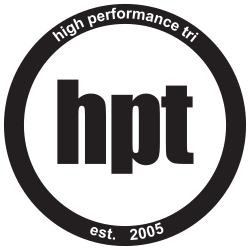The 4 Pillars
I first learnt about the 4 pillars in 2011 when I was on a facilitators course in Auckland, NZ for World Triathlon. The class was tasked with presenting on a topic using different ways of delivering their concept.
I can’t recall what my topic was, but I used video as my preferred delivery method as video creation and editing was one of my core skills.
One of the other facilitators delivered on the 4 pillars of performance concept and I still use it every day.
It was one of those moments that when you hear it everything falls into place. You know you are going to use it every day from then on.
The 4 Pillars Concept
All performances can be broken down into four areas or categories.
Mental, Physical, Tactical, and Technical
If I am planning / strategizing on a project with an athlete I will draw up a matrix and put notes into each quadrant. One for the athlete review and one for forward coaching strategy.
The Athlete Review could look like this
Very disciplined but needs to declutter thought processes to allow focus on what is important. Introvert.
Physiologically strong. History of lower leg niggles.
Dislikes seeing too far ahead as they lose focus. Has had issues with race strategy and getting derailed from the plan.
Technically sound athlete across swim, bike, run.
Then the Coach needs a plan to address the items in the review
Provide mental prompts through feedback process that reminds the athlete to focus. Be okay when they withdraw a little but nudge them when relevant that we need to keep communication up.
Manage the run load very carefully and monitor for any load spikes through missing sessions. HR caps in case athlete gets carried away with pace. Have a strength plan in place. Possibly a gym but at a minimum some good tempo work and hill reps
Keep program delivery to a week ahead. Identify when next recovery week is coming. Always work on race planning and tying training to race paces. Drill it into them.
Remind athlete that technique is their strength as this relates to efficiency of movement. Prompt what is good in their technique, so it reinforces capability and as such confidence.
Using the 4 Pillars for a race review
Athlete started using negative self-talk moving into the last week of the race. We discussed bringing the mind back away from fears of failure / outcomes back to what is controllable – i.e. our processes like nutrition, preparing equipment, practicing race paces, etc.
All data supports the fact that the preparation was good. HR didn’t climb at the end of the run showing endurance was up there where we needed it. Athlete was able to meet the demands of the early pace and then could sit at the paces we trained for with all the data reinforcing that the race plan was on target.
The tactic of being alert early so they could stay around the major players was vital. This meant we didn’t have to chase and bring a fear mindset in when the run got quick. The strategy of “always be in the race” clearly helped with clarity of execution on the day.
Technically the form held up all day. This was due to practicing holding form in the quality sessions (especially back end) and having cues on race day to remind them what was important.
Conclusion
When there is a lot going on, the coach needs a way of framing up an approach to a performance. We don’t want reviews or plans to be emotional. We want them clinical and professional.
This approach can be done in a written form but also can be used in the post-race chat. This way we don’t forget the key elements and the athlete knows what to expect.
I carry a 4 Pillars around in my head for every athlete, every preparation and every race. It used to be written, but after coaching for 21 years I now am able to use it instinctively.
